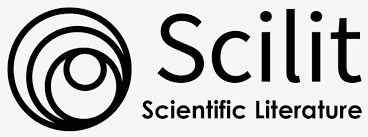Penerapan Data Mining dalam Mengelompokkan Kunjungan Wisatawan ke Objek Wisata Unggulan di Prov. DKI Jakarta dengan K-Means
DOI:
https://doi.org/10.14421/jiska.2018.23-06Abstract
Visits of foreign tourists to Indonesia can increase the country's foreign exchange and improve the economy of people in tourist areas. Jakarta is the capital of Indonesia which became one tourist destination for tourists. There are 8 leading tourist attraction in DKI Jakarta province according to BPS data of Prov. DKI Jakarta 1) Taman Impian Jaya Ancol, 2) Taman Mini Indonesia Indah, 3) Kebon Binatang Ragunan, 4) National Monument, 5) National Museum, 6) Satria Mandala Museum, 7) Jakarta History Museum And 8) Sunda Kelapa Harbor . The purpose of this study is to analyze the application of datamining in classifying the number of foreign tourists visiting the Prov. DKI Jakarta using k-means. The source of research data is from BPS Prov. DKI Jakarta. The research data used is the number of tourist visitors in 2007-2013 in accordance with BPS Prov. DKI Jakarta. The data are grouped into 3 clusters namely C1 = the number of high tourist visits, C2 = the number of tourists visiting medium and C3 = the number of tourist visits is low. The final centroid value used at C1 = 15.438.488, C2 = 4.464.577 and C3 = 342.332. So that the result of grouping C1 = Taman Impian Jaya Ancol, C2 = Taman Mini Indonesia Indah Dan Kebon Binatang Ragunan and C3 = National Monument, National Museum, Satria Mandala Museum, Jakarta History Museum and Sunda Kelapa Harbor. The result of C3 grouping becomes a record for the government of Prov. DKI. Jakarta.
References
Afrisawati. (2013). “Implementasi Data Mining Pemilihan Pelanggan Potensial Menggunakan Algoritma K-Means”. Jurnal Pelita Informatika Budi Karma, Vol 5, No.3, ISSN: 2301-9425
Anindya Khrisna Wardhani, (2016). “Implementasi Algoritma K-Means Untuk Pengelompokkan Penyakit Pasien Pada Puskesmas Kajen Pekalongan”, Jurnal Transformatika, Volume 14, Nomor 1, Pp 30-37
Kusrini dan E.T. Luthfi., 2009, Algoritma Data Mining, Andi, Yogyakarta
Masruro,.A., & Luthfi, E. T. (2005). Sistem Penunjang Keputusan Penentuan Lokasi Wisata Menggunakan K-Means Clustering Dan Topsis. Jurnal Ilmiah DASI, 15(4), 1–5
Mhd Gading Sadewo, Agus Perdana Windarto, dan Dedy Hartama, (2017). “Penerapan Datamining Pada Populasi Daging Ayam Ras Pedaging Di Indonesia Berdasarkan Provinsi Menggunakan K-Meansing,” Jurnal Infotekjar(Jurnal Nasional Informatika dan Teknologi Jaringan), vol. 2, no. 1, pp. 60-67
N. Atthina dan L. Iswari, (2014). “Klasterisasi Data Kesehatan Penduduk untuk Menentukan Rentang Derajat kesehatan Daerah denganMetode K-Means,” Seminar Nasional Aplikasi Teknologi Informasi (SNATI), Vol. %1 dari %2ISSN 1907 - 5022, pp. B52 - B59,.
Ong, Johan Oscar. (2003). “Implementasi Algoritma K-Meansing Untuk Menentukan Strategi Marketing President University”. Jurnal Ilmuah Teknik Industri, Vol 12, No. 1, ISSN: 1412-6869
Prasetyo, E., (2012), Data Mining: Konsep dan Aplikasi Menggunakan MATLAB, Andi, Yogyakarta.
Soni, N., & Ganatra, A., (2012), Categorization of several Clustering algorithms from different perspective: a review, International Journal of Advanced Research in Computer Science and Software Engineering, 2(8), 63-68.
Suprihatin, (2011)."Klastering K-Means Untuk Penentuan Nilai Ujian," JUSI, vol. 1, no. 1, pp. ISSN: 2087- 8737
Wahyo U, B. T., & Anggriawan, A. W. (2015). Sistem Rekomendasi Paket Wisata Se-Malang Raya Menggunakan Metode Hybrid Content Based dan Collaborative. Jurnal Ilmiah Teknologi Dan Informasi ASIA, 9(1), 6–13.
Windarto, A. P. (2017a). Implementation of Data Mining on Rice Imports by Major Country of Origin Using Algorithm Using K-Means Clustering Method. International Journal of Artificial Intelligence Research, 1(2), 26–33.
Windarto, A. P. (2017b). Penerapan Data Mining Pada Ekspor Buah-Buahan Menurut Negara Tujuan Menggunakan K-Means Clustering. Techno.COM, 16(4), 348–357.
Downloads
Published
How to Cite
Issue
Section
License
Authors who publish with this journal agree to the following terms as stated in http://creativecommons.org/licenses/by-nc/4.0
a. Authors retain copyright and grant the journal right of first publication with the work simultaneously licensed under a Creative Commons Attribution License that allows others to share the work with an acknowledgement of the work's authorship and initial publication in this journal.
b. Authors are able to enter into separate, additional contractual arrangements for the non-exclusive distribution of the journal's published version of the work (e.g., post it to an institutional repository or publish it in a book), with an acknowledgement of its initial publication in this journal.
c. Authors are permitted and encouraged to post their work online (e.g., in institutional repositories or on their website) prior to and during the submission process, as it can lead to productive exchanges, as well as earlier and greater citation of published work.









